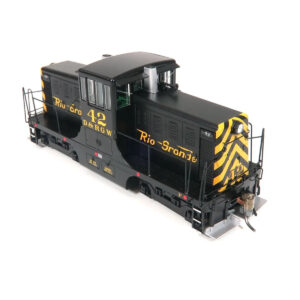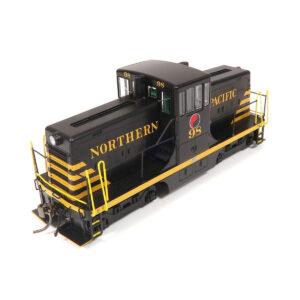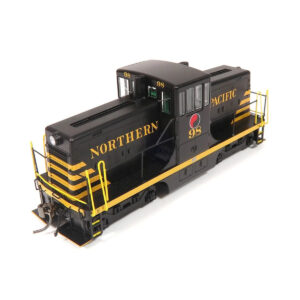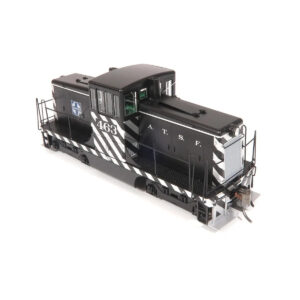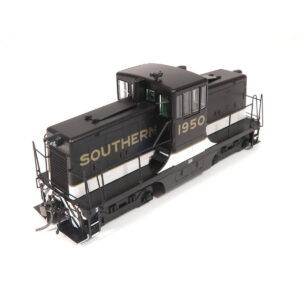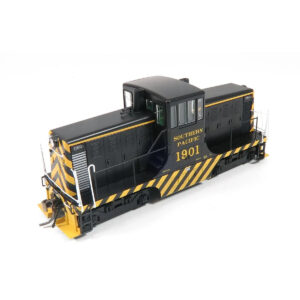44 Tonner Diesel Locomitve
Prototype Information
The GE 44-ton switcher is a four-axle diesel-electric locomotive built by General Electric between 1940 and 1956. It was designed for industrial and light switching duties, often replacing steam locomotives that had previously been assigned these chores.
This locomotive’s specific 44-short ton weight was directly related to one of the efficiencies the new diesel locomotives offered compared to their steam counterparts: reduced labor intensity. In the 1940s, the steam to diesel transition was in its infancy in North America, and railroad unions were trying to protect the locomotive fireman jobs that were redundant with diesel units. One measure taken to this end was the 1937 so-called “90,000 Pound Rule,” a stipulation that locomotives weighing 90,000 pounds (41,000 kg) – 45 short tons – or more required a fireman in addition to an engineer on common carrier railroads. Industrial and military railroads had no such stipulation. The 44-ton locomotive was designed to abrogate this requirement. Other manufacturers like Davenport and Whitcomb also built 44-ton switchers for this reason.
GE built 276 of this locomotive for U. S. railroads and industrial concerns, four were exported to Australia in 1944, 10 were exported to Canada, 10 were exported to Cuba, one was exported to the Dominican Republic, five were exported to France, three were exported to India, six were exported to Mexico, five were exported to Saudi Arabia, one was exported to Sweden, two were exported to Trinidad, 10 were exported to Uruguay, and 57 were built for the United States Armed Forces. Many remain, in service and in museums.
Showing all 7 results
-
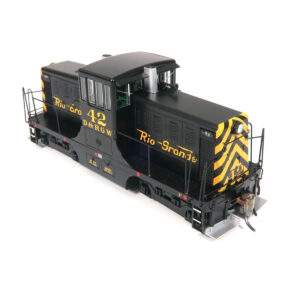
Rapido HO 44 Tonner Denver & Rio Grande
$158.00 Select options This product has multiple variants. The options may be chosen on the product page -

Rapido HO 44 Tonner Denver & Rio Grande w/ DCC & Sound
$249.00 Select options This product has multiple variants. The options may be chosen on the product page -

Rapido HO 44 Tonner Northern Pacific
$158.00 Select options This product has multiple variants. The options may be chosen on the product page -

Rapido HO 44 Tonner Northern Pacific w/ DCC & Sound
$249.00 Select options This product has multiple variants. The options may be chosen on the product page -

Rapido HO 44 Tonner Santa Fe “Zebra Stripes”
$158.00 Select options This product has multiple variants. The options may be chosen on the product page -

Rapido HO 44 Tonner Southern
$158.00 Select options This product has multiple variants. The options may be chosen on the product page -

Rapido HO 44 Tonner Southern Pacific “Tiger Stripes”
$158.00 Select options This product has multiple variants. The options may be chosen on the product page


